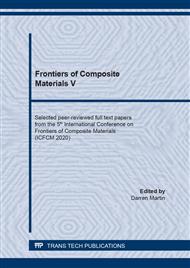p.11
p.17
p.23
p.29
p.37
p.47
p.57
p.69
p.75
Comparison on the Tribological Properties of Roller and Guide Tribo-Pair Used in Antenna Deployable Structure
Abstract:
The tribological properties of roller and guide tribo-pair are important for the design of deployable structure for space-borne perimeter truss antenna. In this study, carbon fiber epoxy resin composites are used as the guide material; while polyimide and GCr15 steel are used as the roller material. Then, friction coefficient of polyimide ball and GCr15 steel ball against carbon fiber epoxy resin composites disk were compared and investigated on the high-temperature, ball-on-disk tribometer under different operating conditions, respectively. The wear morphology of disk was measured by laser scanning confocal microscope. The results show that the friction coefficient of the polyimide ball against carbon fiber epoxy resin composites tribo-pair has better tribological properties. Meanwhile, the friction coefficients of this pair are mainly depend on abrasive wear under low pressure and velocity conditions while the adhesive wear has dominated influence on the friction coefficient for high pressure and velocity conditions. Besides, the tribological properties of carbon fiber epoxy resin composites are mainly affected by ploughing of surface roughness at low temperature, while by surface debonding at high temperature.
Info:
Periodical:
Pages:
37-44
Citation:
Online since:
August 2021
Price:
Сopyright:
© 2021 Trans Tech Publications Ltd. All Rights Reserved
Share:
Citation:


